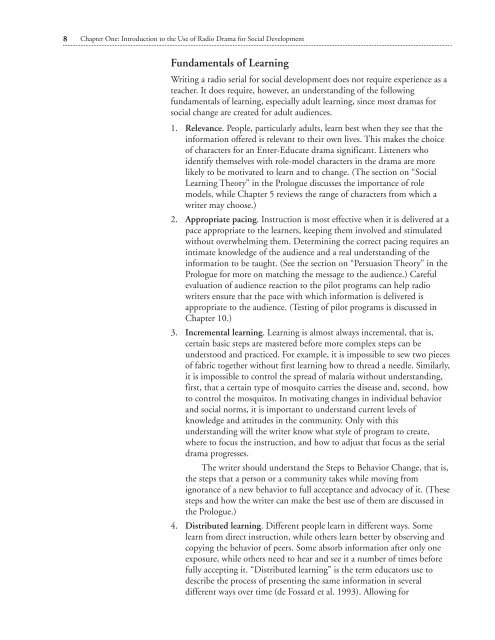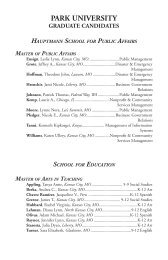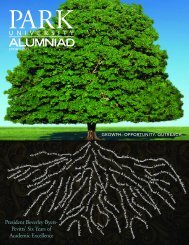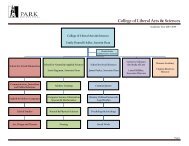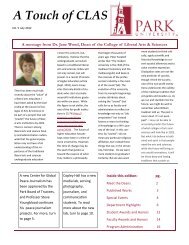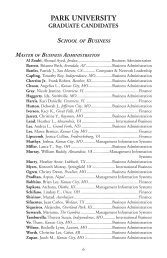How to Write a Radio Serial Drama for Social Development- PDF
How to Write a Radio Serial Drama for Social Development- PDF
How to Write a Radio Serial Drama for Social Development- PDF
You also want an ePaper? Increase the reach of your titles
YUMPU automatically turns print PDFs into web optimized ePapers that Google loves.
8 Chapter One: Introduction <strong>to</strong> the Use of <strong>Radio</strong> <strong>Drama</strong> <strong>for</strong> <strong>Social</strong> <strong>Development</strong><br />
Fundamentals of Learning<br />
Writing a radio serial <strong>for</strong> social development does not require experience as a<br />
teacher. It does require, however, an understanding of the following<br />
fundamentals of learning, especially adult learning, since most dramas <strong>for</strong><br />
social change are created <strong>for</strong> adult audiences.<br />
1. Relevance. People, particularly adults, learn best when they see that the<br />
in<strong>for</strong>mation offered is relevant <strong>to</strong> their own lives. This makes the choice<br />
of characters <strong>for</strong> an Enter-Educate drama significant. Listeners who<br />
identify themselves with role-model characters in the drama are more<br />
likely <strong>to</strong> be motivated <strong>to</strong> learn and <strong>to</strong> change. (The section on “<strong>Social</strong><br />
Learning Theory” in the Prologue discusses the importance of role<br />
models, while Chapter 5 reviews the range of characters from which a<br />
writer may choose.)<br />
2. Appropriate pacing. Instruction is most effective when it is delivered at a<br />
pace appropriate <strong>to</strong> the learners, keeping them involved and stimulated<br />
without overwhelming them. Determining the correct pacing requires an<br />
intimate knowledge of the audience and a real understanding of the<br />
in<strong>for</strong>mation <strong>to</strong> be taught. (See the section on “Persuasion Theory” in the<br />
Prologue <strong>for</strong> more on matching the message <strong>to</strong> the audience.) Careful<br />
evaluation of audience reaction <strong>to</strong> the pilot programs can help radio<br />
writers ensure that the pace with which in<strong>for</strong>mation is delivered is<br />
appropriate <strong>to</strong> the audience. (Testing of pilot programs is discussed in<br />
Chapter 10.)<br />
3. Incremental learning. Learning is almost always incremental, that is,<br />
certain basic steps are mastered be<strong>for</strong>e more complex steps can be<br />
unders<strong>to</strong>od and practiced. For example, it is impossible <strong>to</strong> sew two pieces<br />
of fabric <strong>to</strong>gether without first learning how <strong>to</strong> thread a needle. Similarly,<br />
it is impossible <strong>to</strong> control the spread of malaria without understanding,<br />
first, that a certain type of mosqui<strong>to</strong> carries the disease and, second, how<br />
<strong>to</strong> control the mosqui<strong>to</strong>s. In motivating changes in individual behavior<br />
and social norms, it is important <strong>to</strong> understand current levels of<br />
knowledge and attitudes in the community. Only with this<br />
understanding will the writer know what style of program <strong>to</strong> create,<br />
where <strong>to</strong> focus the instruction, and how <strong>to</strong> adjust that focus as the serial<br />
drama progresses.<br />
The writer should understand the Steps <strong>to</strong> Behavior Change, that is,<br />
the steps that a person or a community takes while moving from<br />
ignorance of a new behavior <strong>to</strong> full acceptance and advocacy of it. (These<br />
steps and how the writer can make the best use of them are discussed in<br />
the Prologue.)<br />
4. Distributed learning. Different people learn in different ways. Some<br />
learn from direct instruction, while others learn better by observing and<br />
copying the behavior of peers. Some absorb in<strong>for</strong>mation after only one<br />
exposure, while others need <strong>to</strong> hear and see it a number of times be<strong>for</strong>e<br />
fully accepting it. “Distributed learning” is the term educa<strong>to</strong>rs use <strong>to</strong><br />
describe the process of presenting the same in<strong>for</strong>mation in several<br />
different ways over time (de Fossard et al. 1993). Allowing <strong>for</strong>


